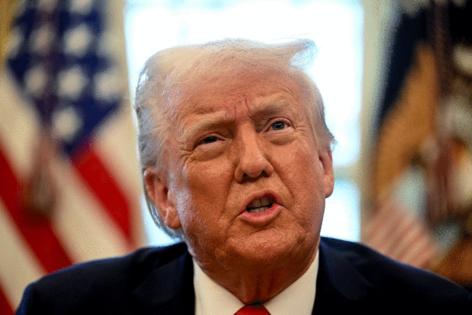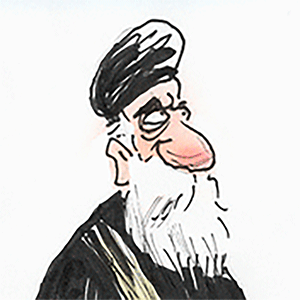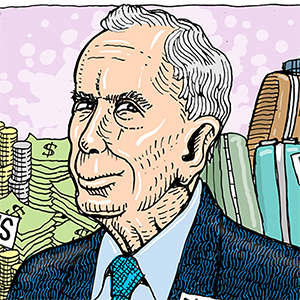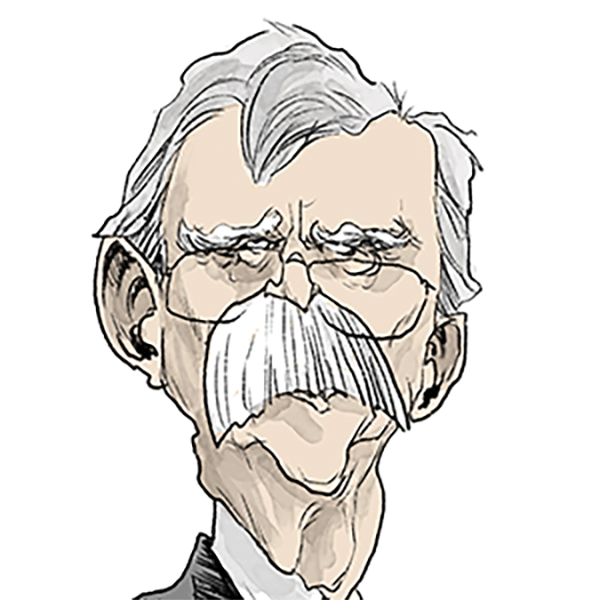Analysis: Trump's tariff reversal shows how he's wielding bombast on trade
Published in News & Features
WASHINGTON — President Donald Trump pledged hundreds of billions in tariffs to remake the global economy and target even his closest neighbors.
But so far, it’s been more Art of the Deal than a revolution.
Trump on Monday shelved plans for wide-ranging tariffs on Canada and Mexico, after doing the same for Colombia the prior week. In each case, Trump relented despite countries promising only modest changes on border security and immigration.
Trump and his allies have held up those concessions as vindication of his approach. But the U.S. president’s willingness — at least for now — to hold off tariffs has underscored doubts over whether Trump, who famously obsesses over market performance, might once again prove a paper tiger on his more fiery trade threats.
Trump could always reverse course again and press for more extreme measures, or impose the tariffs in a bid to offset the projected cost of some of his domestic agenda.
But the deferrals are only likely to feed the U.S. president’s growing reputation for stopping short of his bombast when it comes to trade, using the levies as a negotiating ploy. Even after Trump announced he was pushing ahead with his tariffs over the weekend, the slide in markets was contained as analysts predicted concessions that would limit their impact.
Still, uncertainty swirls: Trump did not announce a pause on China tariffs, which have more support in his party, ahead of a planned phone call with President Xi Jinping later this week. He’s also pledged levies on the EU and key sectors. And Trump emphasized that the Mexican and Canadian pauses are only for a month, raising the prospect he could snap back the levies if he doesn’t see the outcomes he wants.
And Trump’s moves, even if not fully implemented, have come with costs.
Trump’s threats and the prospect of them becoming real dropped U.S. stocks and the currencies of his targets, including the Canadian dollar, Mexican peso, euro, and South African rand. Each of those recovered as Trump delayed his Mexican threat, then his Canadian one.
Meanwhile in world capitals, leaders are taking stock of how to respond to the White House. Much of Canada’s Liberal Party leadership campaign to replace Prime Minister Justin Trudeau has centered on how to take on Trump. And internationally minded businesses across the closest of U.S. allies have been forced for weeks into reviewing their own supply chains.
Familiar concessions
It all leaves unclear whether Trump is all bark on tariffs or whether he still aims to shift the U.S. back toward an era a century ago when import levies were the chief source of revenue.
Trump said he’d take part in ongoing talks toward a deal with Mexico, and conditioned a further Canada reprieve on whether they can reach a “final economic deal.” And he’s still threatening a host of other tariffs, including on the EU.
Allies of the president touted the concessions from Mexico — a deployment of 10,000 National Guard members to prevent drug trafficking and further talks on security and trade — as proof of Trump’s negotiating prowess.
But they struck a familiar tone. Mexico agreed to dispatch 10,000 troops to its own southern border under President Joe Biden’s administration in 2021, and also dispatched several thousand troops to its southern border in 2019 amid similar pressure from Trump over migration.
Canada made a similar announcement — saying that “nearly 10,000 front-line personnel are and will be working on protecting the border” and pledging a handful of new measures, like C$200 million to fight organized crime and naming a fentanyl czar. Trump also praised a C$1.3 billion announcement Trudeau has previously made.
Trudeau’s government scrambled to put together a border plan two months ago, after Trump first threatened tariffs over migration and fentanyl flows. Officials also repeatedly pointed out there is no evidence the border is a significant problem on these issues.
But as time passed with no deal, Canadian officials grew frustrated at the lack of information about what Trump was looking for, and raised doubts that fentanyl was his true motivation.
“We’ve shown them and said that we’ll do what’s necessary to deal with this,” said Finance Minister Dominic LeBlanc in a television interview Sunday. “But I wonder if that’s the actual pretext, or if there’s another policy objective that they’re pursuing.”
The Mexico about-face is virtually identical to Trump’s move in his first term, when he declared a national economic emergency and announced tariffs would go into effect in 2019 — and increase 5% every month until Mexico take actions to address the illegal migration crisis.
The standoff between Trump and his Mexican counterpart took about a week until the president on June 7, 2019, announced in a social media post that he had “reached a signed agreement with Mexico” and tariffs scheduled to be implemented were “indefinitely suspended.”
“Just like in 2019, Mexico came to the table in advance of those tariffs going into effect with commitments that sufficiently addressed the president’s concerns,” said Kelly Ann Shaw, a partner at Hogan Lovells who served as Trump’s deputy economic council director during his first term.
It also mirrors his move last month to threaten tariffs on Colombia in a dispute over deportation flights, only to back off when the Latin American nation’s leader said he would pick up migrants with his own government plane rather than have them fly shackled on U.S. military planes.
Trump’s Saturday announcement that he would press ahead with 25% tariffs on Canada and Mexico, two of the largest U.S. trading partners, shook markets. Equities slumped while oil rose and the U.S. dollar strengthened amid fears the duties would kick off a wider trade war. Canada and Mexico each threatened retaliatory measures if Trump followed through.
Trump has threatened a range of other tariffs, though it’s not clear which, if any, he actually intends to implement. Those include duties on sectors like pharmaceuticals, chips, steel, aluminum, and copper; tariffs on the European Union; and a potential across-the-board global tariff that Trump has said should be “much bigger” than 2.5%.
The president has long spoke about his desire to use tariffs more aggressively to fill government coffers, as he looks to cut taxes elsewhere, and get even with countries he perceives as ripping off the U.S. His decision to pause the Canada and Mexico tariffs leaves those goals unfulfilled for now.
_____
(With assistance from Brian Platt and Justin Sink.)
_____
©2025 Bloomberg L.P. Visit bloomberg.com. Distributed by Tribune Content Agency, LLC.







Comments